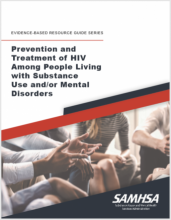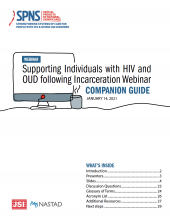
Substance Abuse and Mental Health Services Administration (SAMHSA)



Substance Abuse and Mental Health Services Administration (SAMHSA)
This month, the Department of Health and Human Services (HHS), through the Substance Abuse and Mental Health Services Administration (SAMHSA), announced three funding opportunities to strengthen mental health and substance use systems and services for people with or affected by HIV:
This publication describes the recent trends of drug overdose deaths in the United States (U.S.) and the benefits of adopting harm reduction approaches.
This document provides a quick overview of the federal discretionary funding programs that support essential aspects of the nation’s HIV response.
Achieving the goals of the Ending the HIV Epidemic (EHE) Initiative depends on doing more to strengthen communities, reduce the harm associated with drug use, and prevent disease transmission.
This policy brief identified states potentially at risk for an HIV or HCV outbreak and used data from multiple sources to examine rural-urban differences in 1) state-level infectious disease surveillance, prevention activities, and collaboration with stakeholders; 2) local health department-level
Because of naloxone’s ability to reverse opioid overdose and its ease of use, by July 15, 2017, all 50 states and the District of Columbia had passed legislation to improve naloxone access, as one strategy to reduce opioid overdose morbidity and mortality.
This Advisory offers guidance to providers and administrators in SUD treatment programs on screening clients for hepatitis A, hepatitis B, and hepatitis C infections, as well as action steps for the treatment and support of clients with a viral hepatitis infection and a SUD.
This Advisory highlights strategies and considerations for substance use disorder (SUD) treatment providers to integrate HIV services into their practice and effectively engage people with HIV in SUD treatment.